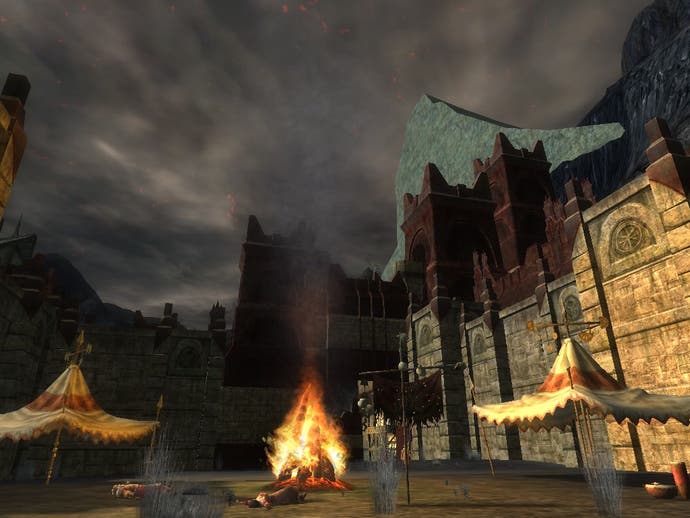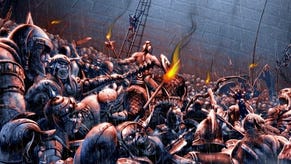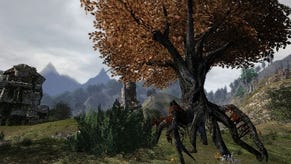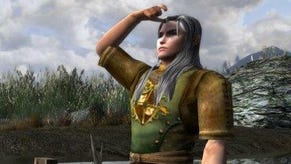Lord of the Rings Online: Shadows of Angmar
Nine for Mortal Men doomed to die?
It could have gone so wrong. So badly, horribly, terribly wrong. From the very outset - from the first announcement of a Lord of the Rings massively multiplayer title, nine years ago - we had terrifying visions. The much loved world of Middle Earth, mutilated beyond recognition by the clumsy hand of a developer who needed to bludgeon Tolkien's narrative into a levelling grind. Hobbit warriors slaying dragons. Elves throwing fireballs. Bunny-hopping humans called 4rag0rn-LoL bouncing through Rivendell shouting "rofl elfs r gay".
Given the myriad ways in which Lord of the Rings Online could go wrong, it's perhaps unsurprising that a lot of people approached the game with a heavy sense of pessimism. It didn't help that in the wake of the success of Peter Jackson's movies, the game had the sense of a cash-in product about it. It certainly didn't help that the developers of the original iteration of the game, called Middle-Earth Online, blabbed about crazy features like "permanent character death", which instantly turned whole legions of gamers off the idea.
Which is why, sitting down to write about Lord of the Rings Online as it finally launches worldwide, we're thrilled, delighted and in no small measure surprised to be asking ourselves this;
How did it all go so right?
Three for the Elven-kings under the sky

You'll probably have two reactions to Lord of the Rings Online when you first fire up the game. First, you'll think to yourself, "damn, this is pretty."
That much is certainly undeniable - LOTRO is very, very pretty. It's far and away the most graphically accomplished MMOG we've played to date, and playing with the high definition client for the game offers lighting, models and environments which really tick all the boxes for this kind of experience. Detailed? Check. Varied? Check. Dramatic? Check and double-check.
Surprisingly enough, the game's visuals don't take as much of a toll on your hardware as you might anticipate. Our test system is an Athlon 64 X2 4800+ with an ATI Radeon X1950 Pro card, which sits somewhere in the mid-range of PC systems produced in the last year or so, and LOTRO runs comfortably at settings a few notches down from the top. The lovely environmental effects still look great, and even the busy, bustling towns in the game don't hammer the framerate down too badly.
Much of the credit for the visuals goes not to the technical accomplishments of the game, however. LOTRO boasts almost uniformly excellent artwork, and it is this - the imaginative creatures, the glorious environments, the superbly detailed equipment on your characters - which really sets the game apart from its rivals. Without downplaying the achievements of the programmers who brought this artwork to life, it's probably fair to say that the art team was presented with a tougher job. To them fell the task of making good on the promise of Tolkien's imagination; of bringing these environments and creatures and characters into being in a way which feels consistent, looks beautiful or grotesque as required, and combines to create a world in which you'll be happy to spend countless hours.
Let us simply say that they succeeded; that Lord of the Rings Online is, visually, a treat which lives up in every way to the imagination which inspires it.
Seven for the Dwarf-lords in their halls of stone

Your second thought will probably be, "hey, this is familiar!"
This one could have gone either way. Lord of the Rings Online is a game which is being launched into a market which has been turned on its head by the success of World of Warcraft. It doesn't matter how much the more hardcore MMOG players out there hate Blizzard's creation; it's got more than ten times as many players as any previous game of its type, and it has proved that there's a global market for MMOGs which extends far further than anyone truly believed. The figures speak for themselves.
The team at Turbine know that, and the design of their game reflects that. Vast swathes of interface design will be completely familiar to anyone who has played World of Warcraft before. Many keystrokes perform the same actions; many interface screens offer broadly the same layouts for their options. This isn't a case of wholesale copying or anything unscrupulous like that, though. Turbine simply understands that there's no point in reinventing the wheel when there are already millions of players who are perfectly comfortable with the way it works now.
The good news, then, is that anyone who has played WoW - and, frankly, anyone who has played any PC role-playing title in the last ten years - will be able to dive straight into Middle-Earth and start accomplishing things, with remarkably little in the way of an initial learning curve to scale.
The better news is that LOTRO doesn't rest on WoW's laurels - not by any means. The real triumph of this game is that it takes many ideas which people will be familiar with from WoW and improves upon them significantly. If the MMOG gameplay encountered by millions of players in WoW is vanilla ice-cream, this is Ben & Jerry's Cherry Garcia. There are more flavours, more complexity, more chunky bits - but you can still eat it with the same spoon, and with little additional training learning curve.

The introduction to the game is a perfect example. Each of the races has a unique introduction sequence which sees you taking part in a heavily scripted mission - be it rescuing Hobbits from a Nazgul raid, or defending an Elven fortress from goblins in an ancient conflict. These sequences give you a chance to get accustomed to the world and to the controls of the game, while also providing a taste of things to come - of the wonderfully well-written, tightly scripted encounters which are one of the strongest aspects of the LOTRO experience.
The game often uses instancing to accomplish these effects, and takes the unusual step of offering quite a few instanced sections which can be completed as a solo player. However, the game is keenly aware that taking MMOG players out of the world in this manner can have consequences, and while instancing is more common than in other games, it is still applied with a deft hand rather than being splashed all over the place. Most of your play time will still be spent in an open, multiplayer world; but Turbine aren't afraid to drag you into an instance to do some really good storytelling, when the game demands it. Others may have a different perspective, but in our view, that's a Good Thing.









